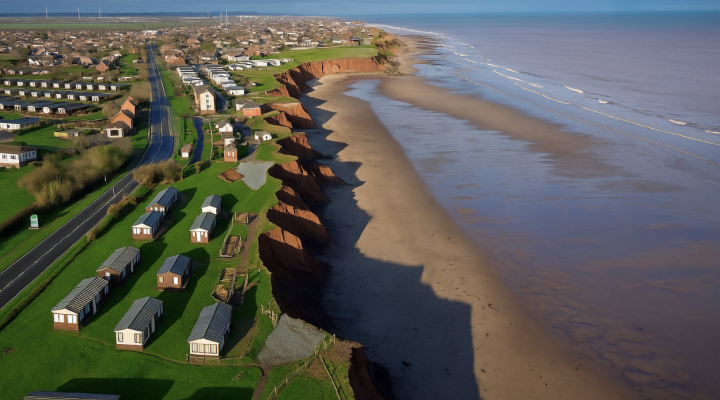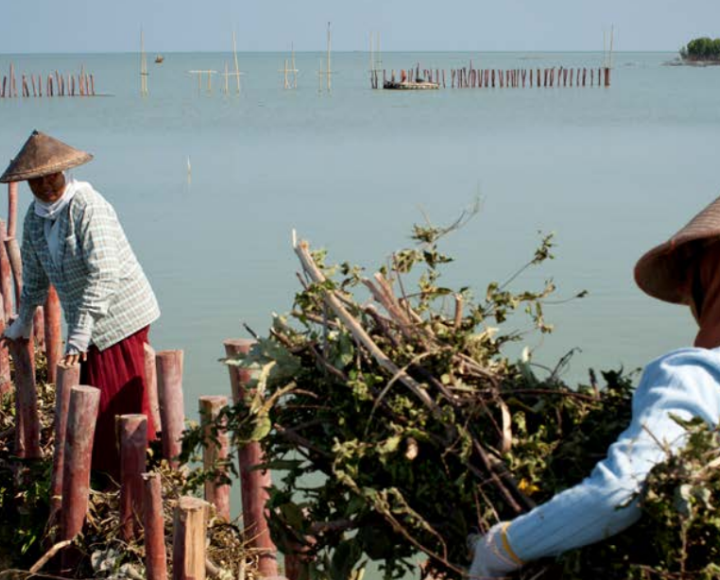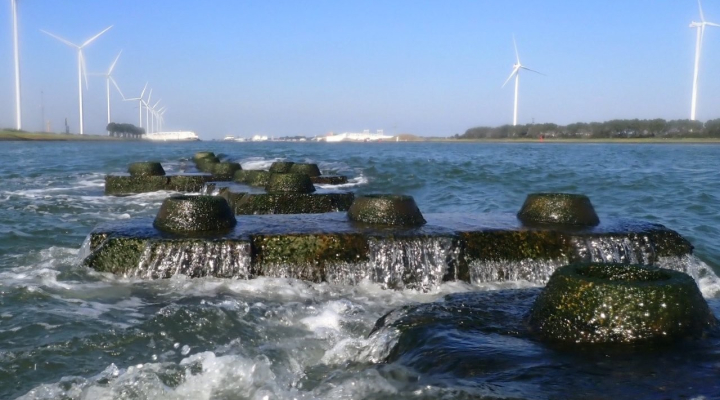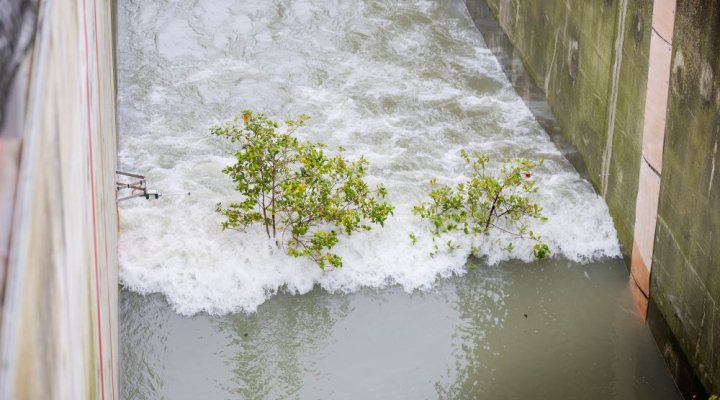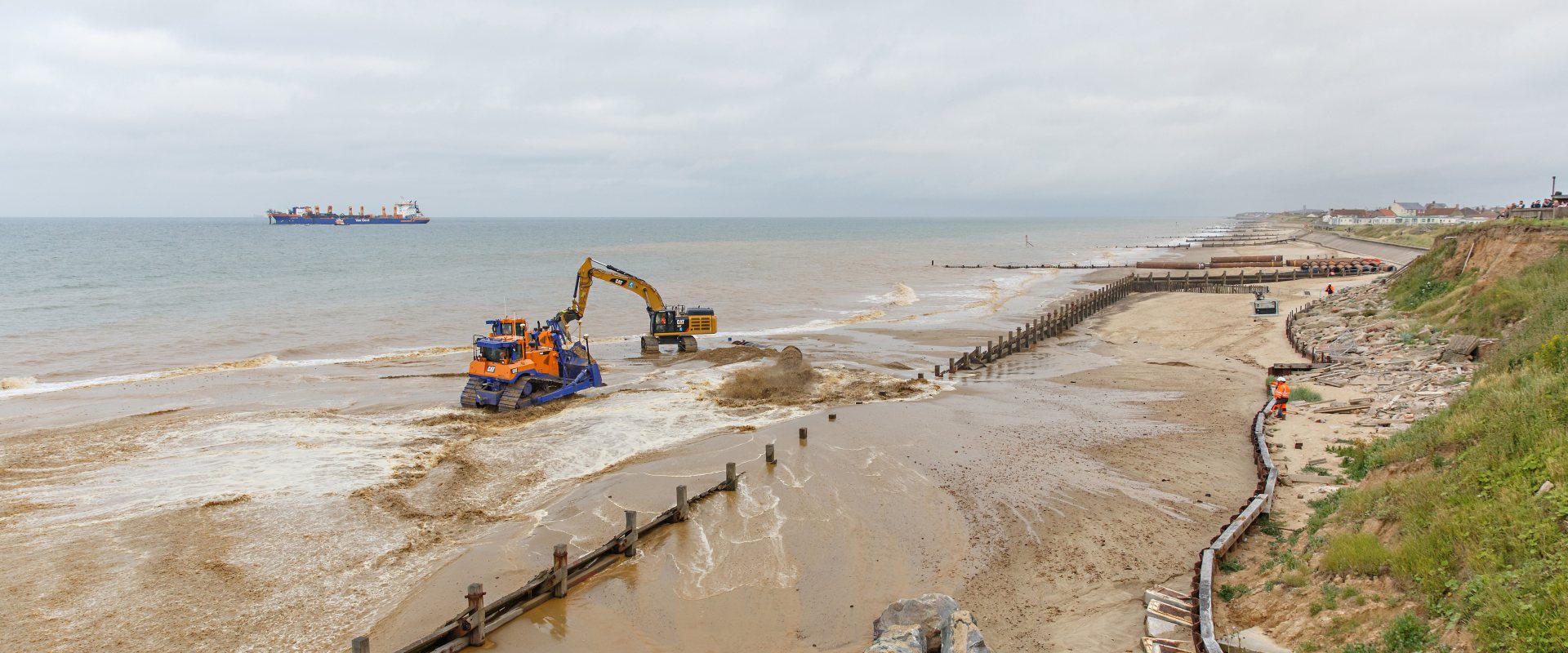
Combatting erosion and flooding on the Norfolk coast via innovative sandscaping
A unique project to protect Bacton Gas Terminal and nearby villages in the United Kingdom is reaching an important milestone, as work begins to place 1.8 million cubic metres of sand on the North Norfolk coast. Dutch company Royal HaskoningDHV initiated and designed the sandscaping scheme to delay coastal erosion that is threatening communities and businesses.
The ‘sandscaping’ initiative is inspired by a proven method first applied by Royal HaskoningDHV in the Netherlands for coastal management. The UK project was initiated after a major storm surge in December 2013 that caused cliff erosion and nearly halved the remaining buffer near the nationally significant Bacton Gas Terminal, while also causing severe flooding in the neighbouring villages.
Storm surges
Sandscaping involves a large ship pumping sand from the seabed from licensed dredging areas, sailing back to Bacton where the sand is nourished onto the shore and positioned by bulldozers. The sand will substantially increase the height and width of the beaches. Waves and tides will help distribute the sand along this part of the coast so that it gradually moves from the initial bulge at the terminal to the villages.
This natural defence will protect the coast from erosion in the event of major storm surges in the future. In addition to keeping the neighbouring communities safe, the scheme re-creates the dry beaches that the area used to have, while also creating dunes to enhance biodiversity.
The project is the culmination of close collaboration between numerous stakeholders, including gas terminal operators Shell and Perenco, North Norfolk District Council, Royal HaskoningDHV, the Environment Agency and The Crown Estate.




